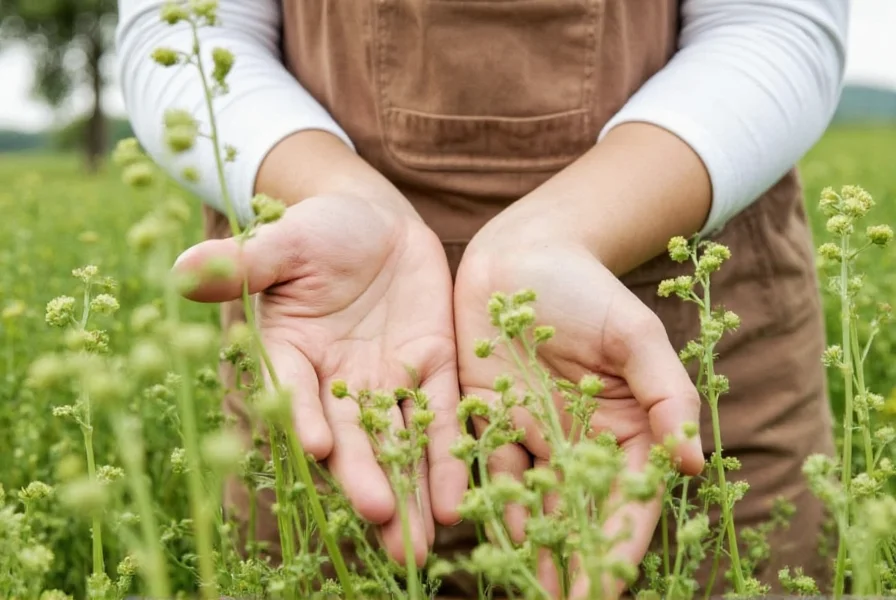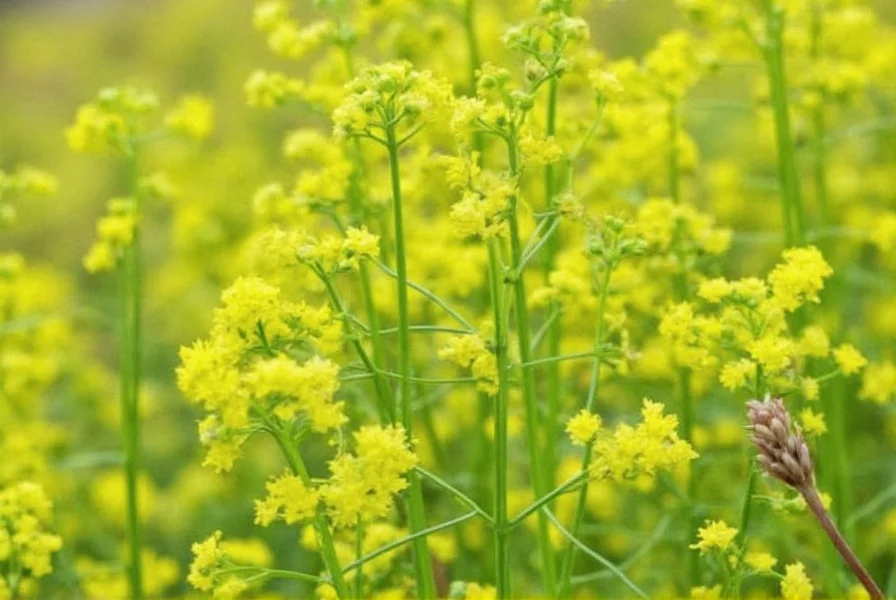Understanding the growth process of mustard seeds is valuable for both home gardeners and commercial growers. This versatile plant, scientifically known as Brassica juncea or Sinapis alba depending on the variety, has been cultivated for thousands of years for its culinary, medicinal, and agricultural uses. Whether you're growing mustard for its pungent seeds, nutritious leaves, or as a cover crop, knowing the specific requirements at each growth stage significantly improves your success rate.
The Mustard Plant: Basic Characteristics
Mustard plants belong to the Brassicaceae family, which includes cabbage, broccoli, and radishes. There are three primary types commonly grown:
- Yellow mustard (Brassica hirta) - produces mild-flavored yellow seeds
- Brown mustard (Brassica juncea) - yields more pungent brown seeds
- Black mustard (Brassica nigra) - produces the most intense flavor
Each variety has slightly different growth requirements and timelines, but they share similar fundamental growth patterns. Mustard plants are known for their rapid growth cycle, making them excellent for quick garden rotations or as a cover crop to suppress weeds and improve soil health.
| Variety | Germination Time | Days to Maturity | Height at Maturity |
|---|---|---|---|
| Yellow Mustard | 5-10 days | 85-95 days | 3-5 feet |
| Brown Mustard | 3-7 days | 80-90 days | 4-6 feet |
| Black Mustard | 4-8 days | 90-100 days | 5-7 feet |
Understanding Mustard Seed Growth Stages
The complete growth cycle of mustard seeds progresses through several distinct phases, each with specific requirements for optimal development. Knowing these stages helps gardeners provide appropriate care at the right time.
1. Germination Stage (3-10 days)
When planted in moist soil at temperatures between 45-85°F (7-29°C), mustard seeds begin absorbing water and swelling. The seed coat splits, allowing the radicle (primary root) to emerge downward while the shoot pushes upward toward the surface. This critical stage requires consistent moisture but not waterlogged conditions. How long does it take for mustard seeds to germinate? Most varieties sprout within 3-10 days depending on soil temperature and moisture levels.
2. Seedling Stage (2-3 weeks)
After emerging from the soil, the young plant develops its first true leaves beyond the initial cotyledons. During this vulnerable period, seedlings require adequate spacing (typically 6-12 inches apart) to prevent competition for resources. This is when many gardeners experience challenges with mustard seed growth problems like damping-off disease or pest damage. Providing proper air circulation and avoiding overhead watering can prevent many common seedling issues.
3. Vegetative Growth Stage (3-6 weeks)
This rapid growth phase sees the plant developing its characteristic leaf structure and establishing a robust root system. Mustard plants are known for their fast growth during this period, often adding several inches per week under ideal conditions. The leaves become increasingly pungent as the plant matures, with some varieties developing the characteristic mustard flavor that makes them valuable for culinary use. Optimal soil conditions for growing mustard during this stage include well-draining loam with a pH between 6.0-7.5 and consistent moisture.
4. Flowering and Seed Production (6-12 weeks)
As days lengthen and temperatures warm, mustard plants transition from vegetative growth to reproductive development. Small yellow flowers appear, which eventually develop into seed pods. This stage requires continued attention to water needs, as drought stress can cause premature pod drop. For those growing mustard specifically for seed harvest, understanding the mustard plant growth stages timeline becomes critical for determining the optimal harvest window.
Optimizing Conditions for Successful Mustard Seed Growth
While mustard is relatively easy to grow, optimizing environmental factors significantly improves yield and quality. The following conditions create the ideal environment for robust mustard seed development.
Soil Requirements
Mustard thrives in well-draining soil with good organic matter content. The ideal pH range is slightly acidic to neutral (6.0-7.5). Before planting, incorporate 2-3 inches of compost into the top 6-8 inches of soil. Mustard plants have moderate nutrient requirements, but respond well to balanced fertilization, particularly with nitrogen during early growth stages. Testing soil before planting helps determine if specific amendments are needed for optimal soil conditions for growing mustard.
Temperature and Climate
Mustard is a cool-season crop that grows best in temperatures between 55-75°F (13-24°C). It can tolerate light frosts but performs poorly in extreme heat. In warmer climates, plant mustard in early spring or fall for best results. High temperatures above 85°F (29°C) can cause premature bolting (flowering), reducing leaf quality and altering the growth timeline. Understanding regional climate considerations is essential when planning your mustard seed planting schedule.
Water Management
Consistent moisture is crucial throughout the growth cycle, particularly during germination and pod development. Water mustard plants deeply 1-2 times per week, providing approximately 1 inch of water. Avoid overhead watering when possible to prevent fungal diseases. During dry periods, monitor plants for signs of water stress, such as wilting or yellowing leaves. Proper irrigation practices significantly impact how long it takes for mustard seeds to develop fully mature pods.
Common Challenges in Mustard Seed Growth
Even with proper care, growers may encounter several challenges that affect mustard plant development. Being aware of these common problems allows for timely intervention.
Pests and Diseases
Mustard plants can be affected by various pests including aphids, flea beetles, and cabbage loopers. Diseases such as white rust, downy mildew, and clubroot can also impact growth. Implementing crop rotation, using disease-resistant varieties, and maintaining proper spacing for air circulation help prevent many common mustard seed growth problems. Organic pest control methods like neem oil or insecticidal soap can address infestations without harming beneficial insects.
Nutrient Deficiencies
Yellowing leaves may indicate nitrogen deficiency, while purple discoloration can signal phosphorus shortage. Regular soil testing helps identify specific nutrient needs. Applying balanced organic fertilizers or compost tea during the vegetative growth stage typically resolves most nutrient-related issues affecting mustard plants.
Harvesting Mustard Seeds: Timing and Technique
Knowing when to harvest mustard seeds is critical for maximizing yield and quality. The optimal harvest window depends on your intended use.
For culinary use, harvest seeds when pods turn from green to straw-colored but before they split open. This typically occurs 30-40 days after flowering. To determine if your seeds are ready, gently shake a few pods - if you hear seeds rattling inside, they're mature. For oil production, seeds should be harvested when fully mature but before pod shatter occurs.
The harvesting process involves cutting entire plants when approximately 60% of pods have turned brown. Bundle plants and hang them upside down in a dry, well-ventilated area to finish drying. Once completely dry, thresh seeds by rubbing pods between your hands or using a flail. Properly stored in airtight containers away from light, mustard seeds maintain their viability and flavor for 2-3 years.

Varietal Differences in Growth Characteristics
Understanding the specific growth requirements of different mustard varieties helps optimize cultivation practices. Yellow mustard generally matures faster than brown or black varieties but produces milder seeds. Brown mustard offers a balance of growth speed and pungency, while black mustard takes longest to mature but yields the most intense flavor.
For leaf production (often called mustard greens), harvest can begin as early as 3-4 weeks after planting, when leaves reach 4-6 inches in length. For seed production, allow plants to complete their full growth cycle. Some gardeners practice succession planting, sowing new seeds every 2-3 weeks for continuous harvest throughout the growing season.
Conclusion
Successfully growing mustard from seed requires understanding the complete growth cycle and providing appropriate conditions at each stage. By optimizing soil, water, and temperature conditions while monitoring for potential problems, both home gardeners and commercial growers can achieve excellent results. The relatively short growth timeline of 80-95 days makes mustard an accessible crop for beginners while offering sufficient complexity to interest experienced growers. Whether you're cultivating mustard for its culinary seeds, nutritious leaves, or soil-enhancing properties, attention to the specific requirements of mustard seed growth will yield the best results.
Frequently Asked Questions
How long does it take for mustard seeds to germinate?
Mustard seeds typically germinate within 3-10 days when planted in moist soil at temperatures between 45-85°F (7-29°C). Brown mustard varieties tend to germinate fastest (3-7 days), while yellow and black varieties may take 5-10 days depending on conditions.
What are the optimal soil conditions for growing mustard?
Mustard grows best in well-draining loam with a pH between 6.0-7.5. The soil should contain adequate organic matter (incorporate 2-3 inches of compost before planting) and maintain consistent moisture without becoming waterlogged. Mustard has moderate nutrient requirements but benefits from balanced fertilization, particularly with nitrogen during early growth stages.
When is the right time to harvest mustard seeds?
Harvest mustard seeds when pods turn from green to straw-colored but before they split open, typically 30-40 days after flowering. To check readiness, gently shake pods - if you hear seeds rattling inside, they're mature. For best results, cut entire plants when about 60% of pods have turned brown and finish drying them in a well-ventilated area.
What are common problems when growing mustard seeds?
Common mustard seed growth problems include pests like aphids and flea beetles, diseases such as white rust and downy mildew, and environmental issues like premature bolting in hot weather. Nutrient deficiencies may cause yellowing or purple discoloration of leaves. Proper spacing, crop rotation, and consistent moisture help prevent many common issues.
How long does it take for mustard plants to reach maturity?
Most mustard varieties reach full maturity in 80-95 days from planting, depending on the specific type and growing conditions. Yellow mustard typically matures in 85-95 days, brown mustard in 80-90 days, and black mustard in 90-100 days. Factors like temperature, soil quality, and water availability can affect the exact timeline.











 浙公网安备
33010002000092号
浙公网安备
33010002000092号 浙B2-20120091-4
浙B2-20120091-4